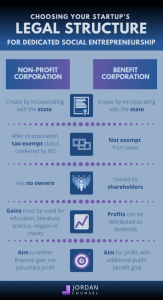
The goal of any PPC campaign is to convert clicks into sales and optimize the ROI. No one wants to waste money, not even the big companies that have some to spare.
Setting up a successful PPC campaign can be tricky. There’s an entire career field dedicated to PPC optimization. If you aren’t an expert, there are still a few areas you should understand and focus on to boost your results.
Step up your game with these three keys to PPC success.
Keywords
Keywords are the driving force behind a higher ROI and successful PPC campaign. There are four main types of keywords you should consider bidding on: brand, generic, related, and competitive. For example, say I was researching a campaign on behalf of Nike. Their keyword tree might look a little like this:
To up your keyword game, follow some of these pro tips:
- Bid on the Competition. This way, you can ensure that when someone searches for your competitor, your ad shows up, too.
- Apply Related Terms. You can show users ads that they may also be interested in. Like hey, I see you searching for running shoes. Here’s an ad for a pretty cool treadmill, too. After all, you’re not just buying the shoes to look at them.
- Use Long-Tail Keywords. They may not show up in as many searches, but they’re more specific, and more likely to bring qualified customers that lead to higher click-through and conversion rates. One downside: analyzing them can be tricky.

Source: Yoast
- Group Your Keywords. Keyword grouping involves clustering related keywords into high performing ad groups that drive in more traffic. In doing so, you’re improving your ad’s relevance, click-through rate, and Quality Score. And, optimizing your Quality Score means you’ll also be optimizing your ROI and lowering your cost per conversion.
- Apply Negative Keywords. Negative keywords help filter out unwanted clicks by telling the search engine when not to show your ad to avoid showing it to the wrong audience. It doesn’t help to show your ad for riding boots if a user is searching for rain boots.

Source: Imgflip
- Try Dynamic Keyword Insertion. DKI lets you use a formula to customize a generic ad to match a user’s search query, creating a much more individualized and targeted ad. But a word of caution – DKI can be tricky, and mistakes can range from bad to worse.
Ad Copy
Once you optimize your keywords so users see your ad, you’ll want to make sure your ad stands out against the competition.
- Get Dynamic. Ad fatigue is a real problem for marketers. Users who see the same old thing time and time again are less likely to notice the ad.
- Be Creative. Don’t be afraid to be creative with your ad! Include ad extensions and strong CTA’s at the bottom of your ad that allow a customer to navigate to exactly what they may want on your site. Include formatting that will stand out from the rest of the ads, such as an advertiser rating.
- Switch It Up. Your ad copy should change with the day, month, or any sales you have going on. People are much more likely to click on an ad that promises a sale than a generic one that just states what you have to offer. Just look at the ads below. Sure, they both have CTA’s (although no links), but only the bottom one gives a specific price of $ 49/mo and lists specifics. I don’t know about you, but I’d click on that one.

- Add a Sense of Urgency. Adding a countdown for a sale or opportunity ending also adds a sense of urgency to your ad that will make users more likely to click. People have a fear of missing out (FOMO), and they’re more likely to click on an ad if they believe they’ll lose out otherwise.

- Focus on the Customer. After all, they’re the one who will be seeing the ad. Make it about them and what you think they need from you. Remember, the customer doesn’t know as much as you do, so make sure you’re as clear as possible.
Traffic Sources
Traffic sources are the sources of your ad traffic. In PPC, it’s where your paid traffic is coming from.
- Each Traffic Source Can Have a Unique Audience. Most of these audiences are engaged in different ways. For example, users on YouTube want to engage in video content, but your Facebook audience may respond better to static image.
- Research Your Sources. There are pros and cons to every source, and you want to make sure you’re analyzing where your traffic is coming from to make sure your budget is going toward the sources working best for your ad. Google and Facebook have the most popular PPC advertising systems, but some alternative networks (like eZanga) can offer cheaper, more niche audiences.

- Create a Whitelist. This is a clone of your campaign that singles out the sources that bring you the better traffic. Building your whitelist involves a lot of testing, but it can help you to target the sources that have performed the best for your campaign so you can allot more of your budget toward those ads.
Digital & Social Articles on Business 2 Community
(80)
Report Post







